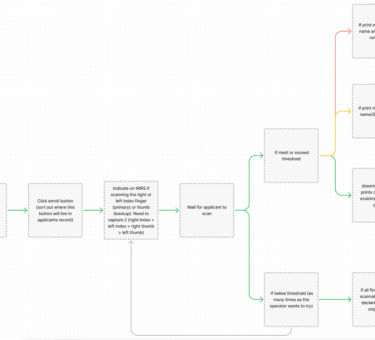From Side-Scrolling to Open World
In the early days of video games, many followed variations of side-scrolling. The original Super Mario Bros. is an example of a side-scrolling video game, where the player is pitted against the environment in a journey that is linear, moving left to right. In this two dimensional world, the player starts on the leftmost edge of a map and runs to the right until they reach the end of the level. At the end of the first level, the player is taken to the next level where the process repeats. If the player does this enough times without running out of lives, Mario will eventually achieve his goal: rescuing the princess.
As video games evolved, a new concept began to emerge: the open world. In an open world game, the rules are very different. There is a starting point and a goal, but the goal is not achieved by traveling a certain distance, like the original Super Mario — it’s reached through acquiring certain achievements. Unlocking achievements unlocks new areas and actually changes the world, which allows progression.
In a later Mario Bros. game, Super Mario 64, the player is dropped into a three-dimensional world. Progress doesn’t come by getting to the end of the level, but rather by performing tasks to win stars. When a certain number of stars are won, another area opens up. Once enough stars are won and enough areas are unlocked, the player can access the final level, where Mario can save the princess.
The evolution from side-scrolling to open world video games isn’t limited to the Mario Bros. franchise — it’s comparable to how user experiences have changed with the evolution of the internet.
An Open World User Experience
With user experience design, it’s easy to fall into thinking about progression as something self-contained, like a side-scrolling video game: the user will start here, they will go here, they will perform these actions, these actions will give them a result, and then they repeat. But the digital world is evolving beyond linear progression. Now, user journeys greatly vary, as well as the “achievements” users are looking to unlock — creating more of an “open world” experience.
Instagram is an example of non-linear progression. There is no end goal to Instagram; the user “plays” Instagram by acquiring likes and followers. As the user interacts with the app, posts photos, leaves comments, and likes content, the world of Instagram evolves.
Dribbble is another example of an open-world user experience. Dribbble created a portfolio platform for designers to promote their work, like a giant virtual museum of art. As users add images and videos to the application, the museum expands and there is more to explore. If everyone removed all their content all at once, the world would collapse and the museum would be empty, as Dribbble doesn’t create content themselves.
To build effective and engaging experiences for the future, designers must stop thinking about what they are designing in terms of linear flows and static content. The goal is not to get a user to the end of a website. We are no longer in the side scroll era: The digital world has become a space we exist in and we must think about how we move through that space. Acknowledge assumptions, be explicit about what the goals are, and embrace the constraints of the medium. It’s imperative to think about user experiences not as linear flows, but as open worlds that unlock new possibilities and create opportunities for meaningful goals.
This shift in mindset requires asking different questions:
- Rather than asking: What are the user’s tasks? We must ask, who does the user aspire to become?
- Rather than asking: What is the end goal? We must ask, how can their presence change the environment?
- Rather than asking: How can we communicate the features and values? We must ask, how can the environment adapt to their needs?
Perhaps the most profound example of the success with this new way of thinking was Yahoo and Google. Yahoo presented users with links, weather, sports, favorites, ads, and banners all trying to guess what the user liked and draw them in. On the other hand, Google asked a very simple question: What are you looking for? And then spent its time improving results to ensure they were exactly what the user wanted, adapting the environment to their needs.
The internet is increasingly becoming an open world and as it continues to evolve, user experiences will continue to evolve alongside it — meaning that designers have a duty to consider how to get the user to the end goal in the clearest way possible. Moreover, we must consider all the new factors that will arise as the user journey progresses, as “winning” no longer looks the same across all experiences. Because now there are so many paths for a user to take, we may not always know where a user starts — but we know where they need to end up.
Want to learn more about how Tandem can help create an intuitive user experience tailored to your business needs? Let’s chat!









